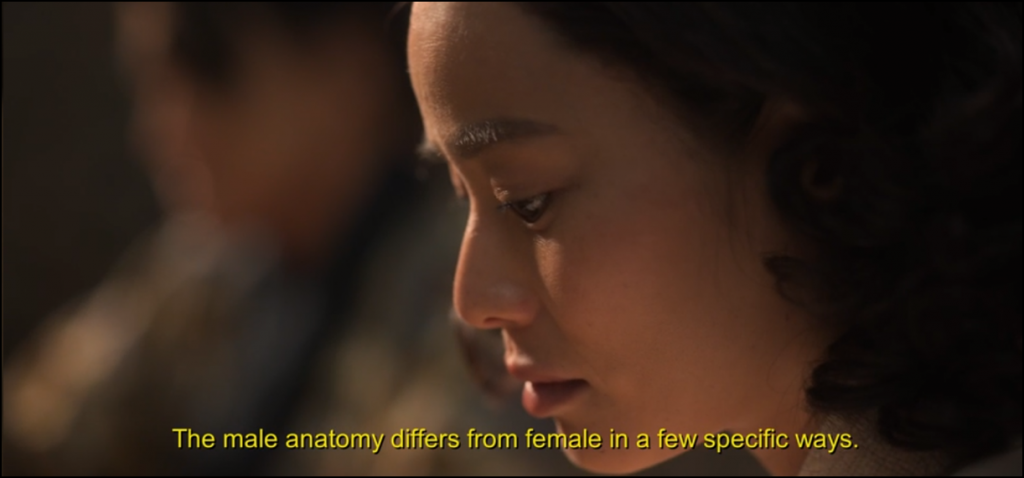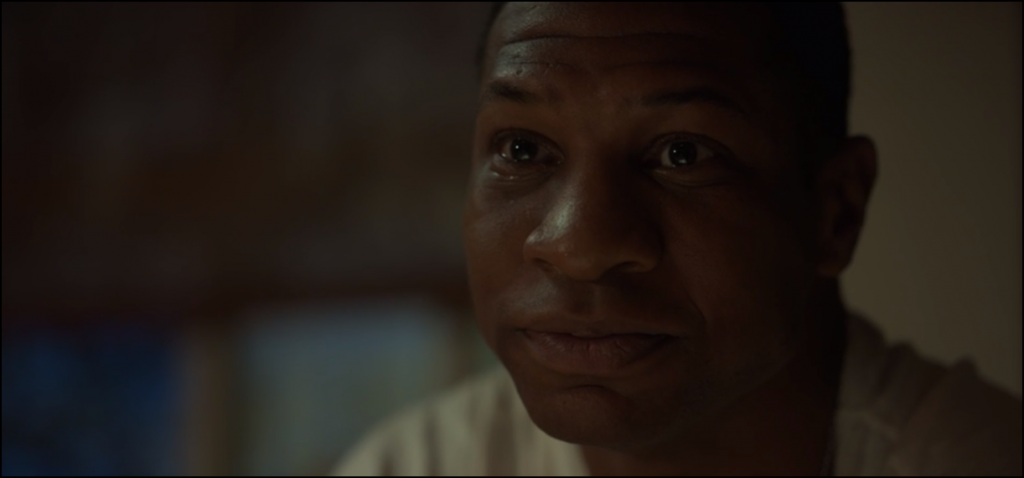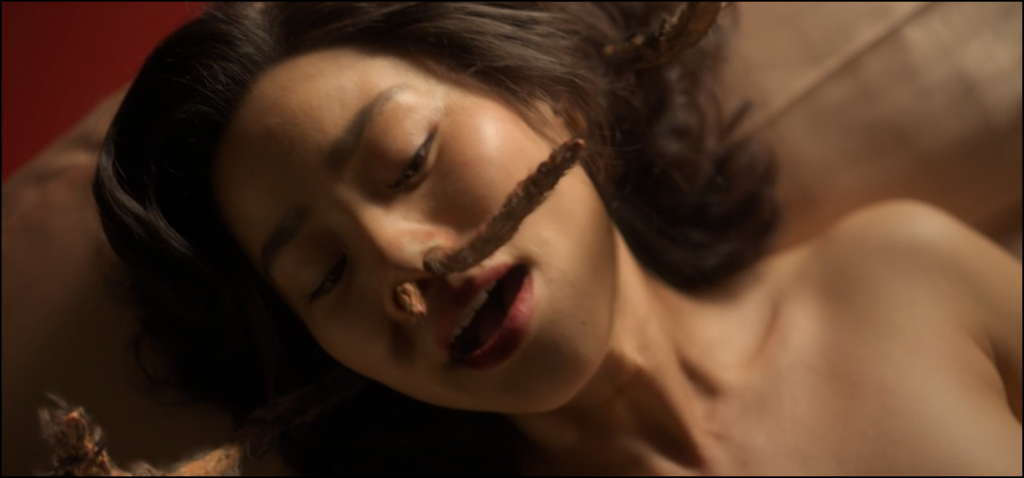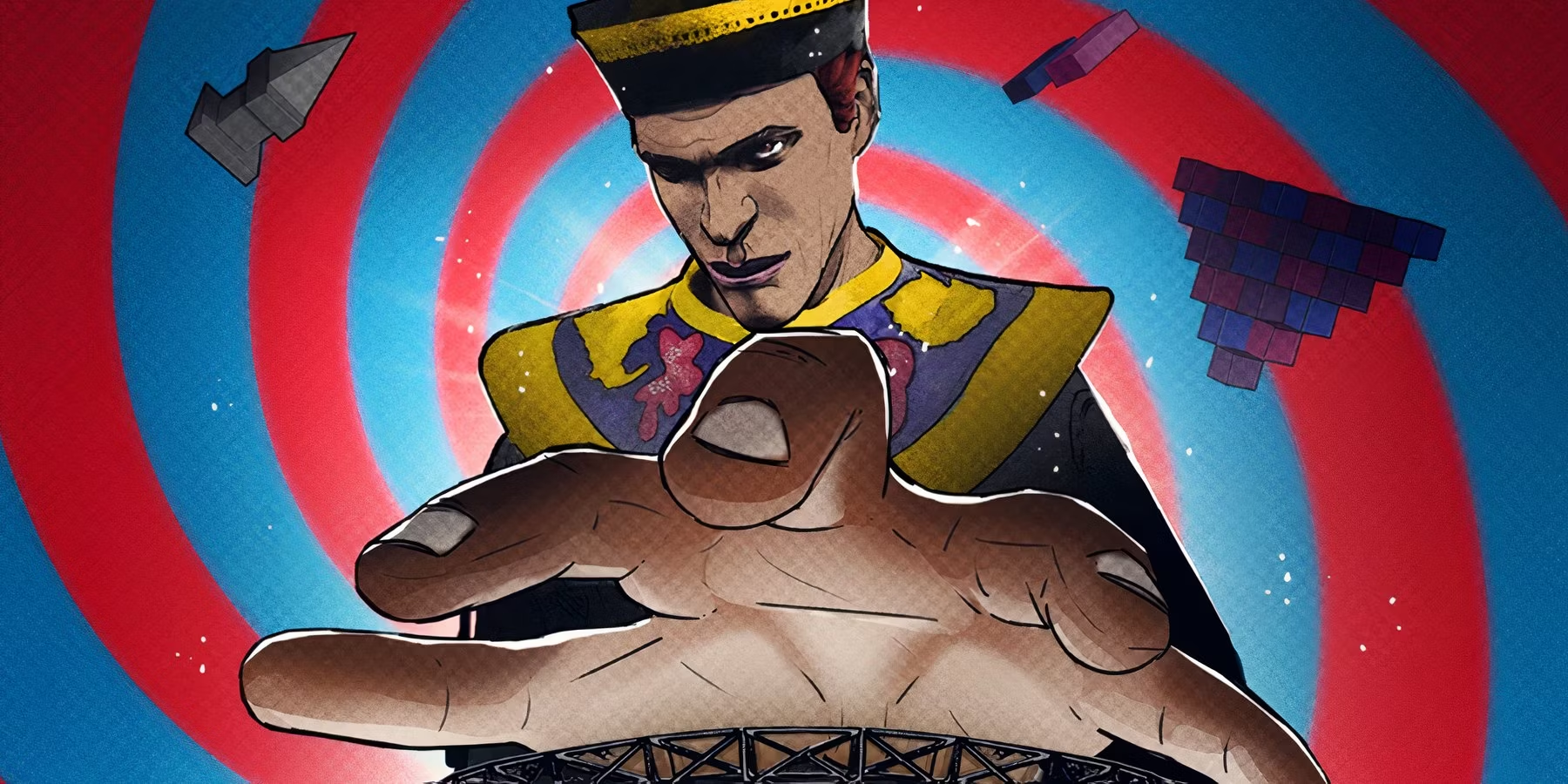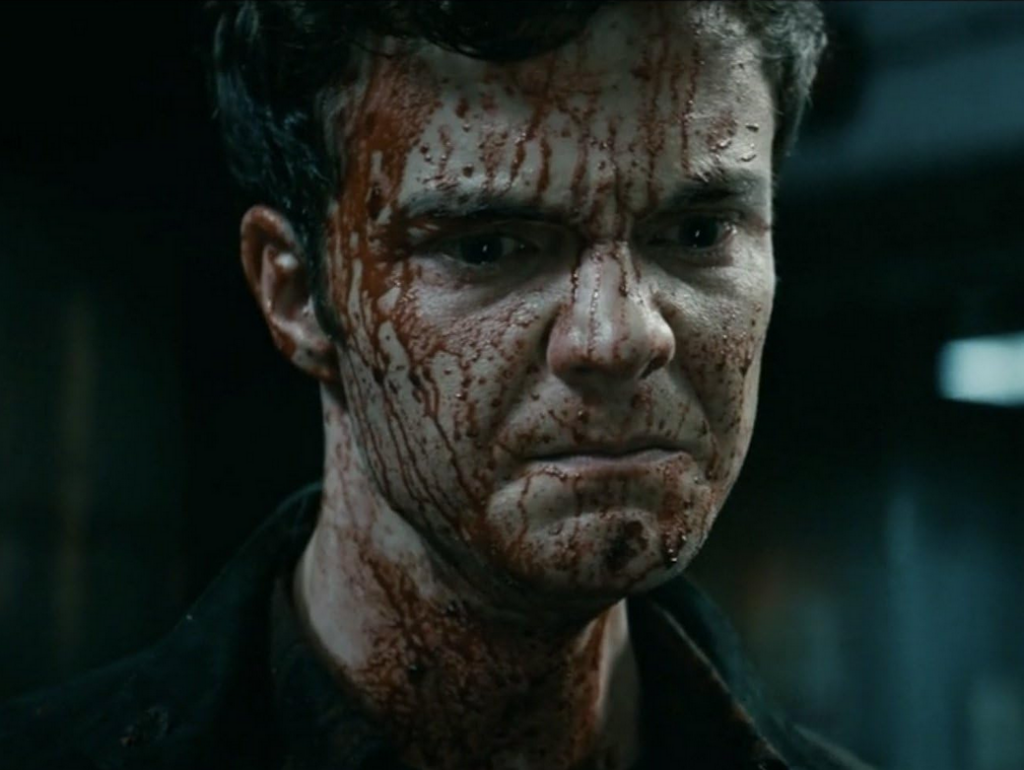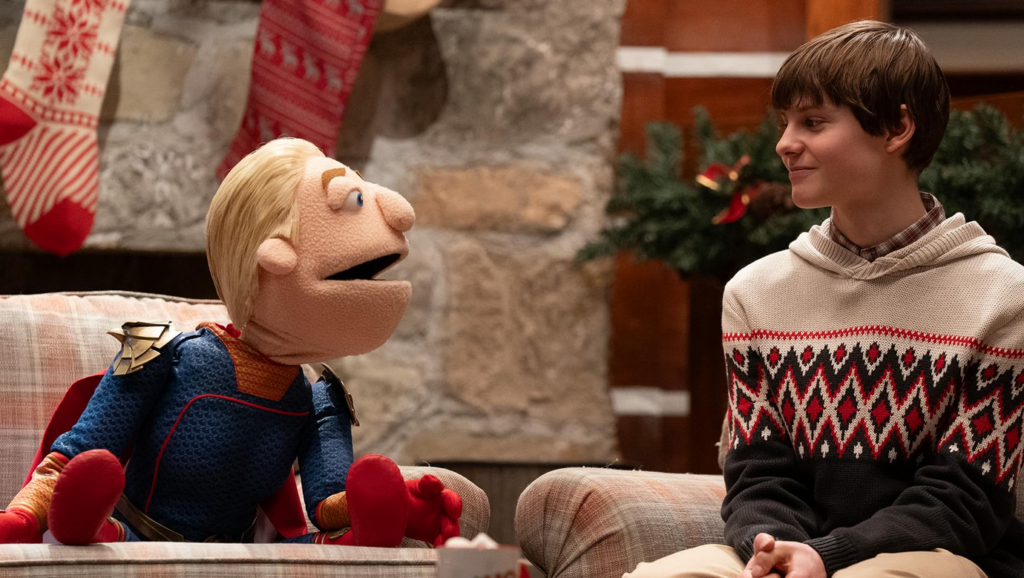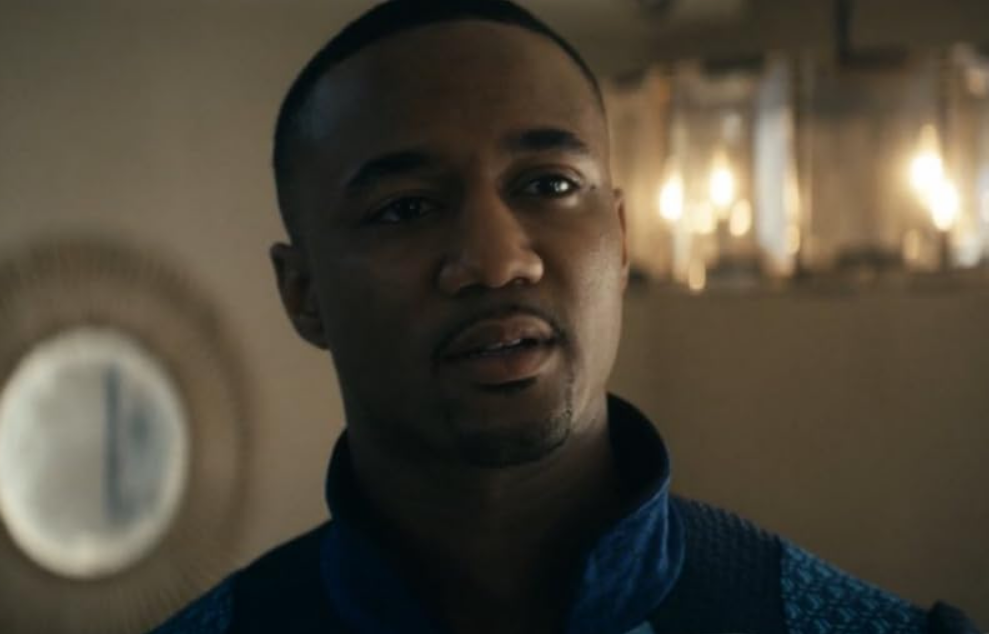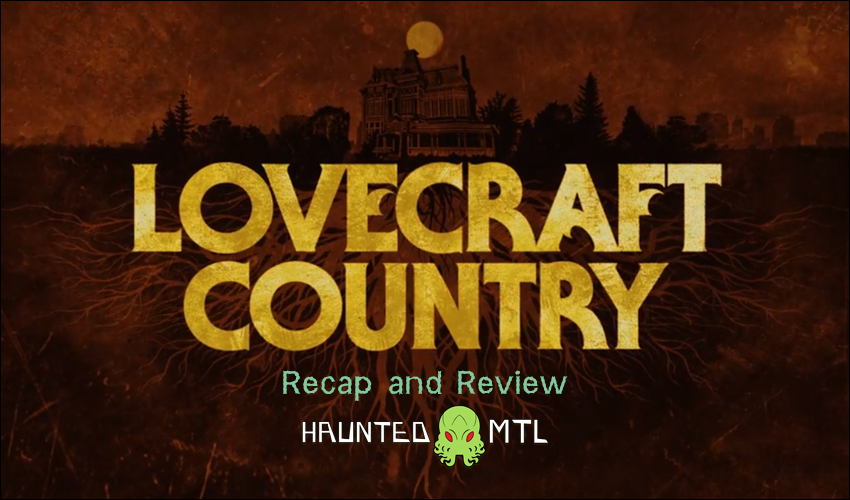
Lovecraft Country: S1E6
More Videos
Published
4 years agoon
Lovecraft Country delivers a season-best episode in its sixth outing, “Meet Me in Daegu.” It’s not only the best episode of Lovecraft Country yet, but great horror TV in general and quite the feather in the cap of the series.
The story so far…
Ji-Ah makes her full debut in “Meet Me in Daegu.” Atticus’ overseas lover has been heard from, fought in a magic-induced vision, and given the form of the Princess of Mars in the series’ opening dream sequence, but they never indicated the potential depth of the actual person. Her first appearance delivers, though, greatly expanding the world of Lovecraft Country and slowing down the series to create a morally complex and ultimately human portrait of a technically inhuman woman in inhuman times.
The episode opens with an exuberant Ji-Ah watching Meet Me in St. Louis and begins to dance and sing in the empty theater until it is revealed she has merely imagined letting loose. She continues to watch her idol Judy Garland, reserved and alone in the darkened theater.
The series chronicles close to a year of Ji-Ah’s life, opening in 1949. She and her mother, Soon-Hee, discuss their misfortune and Soon-Hee pushes for Ji-Ah to bring home a man. At first, this suggestion seems like the annoying but ultimately supportive needling of a mother to a daughter. Ji-Ah goes on a disappointing speed-dating experience when she gets out of her nursing school, and ultimately ends up bringing home a man from a night club. They have sex until furry tentacles emerge from nearly every hole in Ji-Ah’s body, penetrating the man, absorbing his soul, and ultimately ripping him apart into a spectacular shower of gore.
We learn, then, that this is expected of her. Ji-Ah needs to find ten more men, to meet the necessary 100 souls she needs in exchange for the magic that summoned her. Ji-Ah is a kumiho, a Korean fox spirit that is said to punish wicked men.
So, Ji-Ah continues to work as a nurse and seduce men and consume souls as the war rages on, moving into the 1950s. She spends what free moments she has watched movies as well, mostly what seems to be Judy Garland films. She also connects to her friend and co-worker Young-Ja and perhaps desires more, feeling a connection that she feels is absent in her life of seduction and murder. Tragically, the nurse shift is driven to a remote area and interrogated by US soldiers who proceed to execute two of the nurses, trying to flush out a “communist sympathizer.” One of these soldiers is Atticus Freeman who callously executes one of the two nurses. Young-Ja reveals herself to be the woman the army is after, and she is dragged off to her inevitable demise.
Time marches on, the hospital is filled with wounded and the movie theater, her only refuge, is shut down due to the apparent activities of a communist sympathizer. As things look their most bleak, Ji-Ah is given a new purpose: she has one soul left to claim and Atticus Freeman is one of the patients.
Ji-Ah begins to interact with a traumatized Atticus and over a series of genial interactions they begin to strike up a relationship, bonding over The Count of Monte Christo and the mutual commiseration over their outsider status among their respective nations. Ji-Ah and Atticus fall in some kind of love, as Ji-Ah’s understanding of the concept may be skewed by the tragedy of her origins. Soon-Hee’s already tense relationship with her “daughter” is further strained by Ji-Ah’s reluctance to claim Atticus’ soul.
Soon-Hee’s anxiety is that Ji-Ah is only the physical form of her daughter, her spirit is that of the kumiho. It turns out the Soon-Hee gave birth out of wedlock, resulting in her being an ostracized woman. She later marries a man who turns out to be a pedophile who raped the young Ji-Ha. Soon-Hee visits a shaman for revenge and the price of this was the replacement of her daughter’s spirit for the kumiho’s and the need to claim the souls of 100 men. Ji-Ah only carries the barest traces of Soon-Hee’s daughter’s spirit and also contains the memories of every man killed. Soon-Hee wants her daughter back, but Ji-Ha, the soul-stealer, just wants to find acceptance.
Believing she may have found that acceptance and love with Atticus, Ji-Ah is pressured into revealing her nature to him as a final test. Before this can happen, Atticus reveals he has enough points to ship out to the US again. The pair begin to have sex but the kumiho tails emerge, despite Ji-Ah’s desperate bit to refract them as spare Atticus. The coupling results in a mind-meld of sorts, where Ji-Ah experiences Atticus’ past and future, and Atticus experiences visions as well.
They break the coupling and traumatized Atticus flees into the night as Ji-Ah cries out that he will die if he returns to the states. Sometime later, still concerned about Atticus, Ji-Ah visits the shaman, accompanied by Soon-Hee. We finally get a sense of the larger cosmic awareness that has been missing from the series; the shaman informs Ji-Ah that her moral concerns are pointless, she has no mother and Atticus’ potential death is just one of a tide of inevitable deaths.
How it worked out…
The episode is suitably horrific, again, mostly based on its exploration of race, with the additional horror of jingoistic war and anti-communist fervor. However, Ji-Ah’s monstrous kumiho form is also quite disturbing and gratifying for fans of body horror. Everything about the episode just seems to click, baring the obvious plothole of Atticus’ own experience with the supernatural prior to his apparent introduction in the pilot. The episode works better as a sort of “stand-alone” horror experience compared to, say, “Holy Ghost,” mostly because it slows down to really live in the moments of horror and evil of the world. Where “Holy Ghost” was limited, it was also a bit too fast. Ji-Ah’s story, in contrast, feels far better paced.
The show also introduces the new wrinkle of Atticus being a killer in what can be seen as a morally indefensible way and how he seems to be perpetuating the vicious cycle of violence seen in Montrose and what we hear about Montrose’s own father. It’s not just the shock of Atticus’ shooting of a defenseless nurse under orders, either, but in his final night with Ji-Ah she sees that Atticus also was involved in the torture (and likely murder) of Young-Ja. It’s a hard thing to reckon with going forward. It’s a darkly complex addition to Atticus’ character that contextualizes his actions and apparent calmness regarding the supernatural in the series; he’s seen the Hell of war, but he’s also seen the unexplained.
Whether he can be redeemed of his sins is another question entirely.
The shining light of the episode, of course, is Jamie Chung who creates a complex, moving, and ultimately tragic figure in Ji-Ah in the span of an hour. Of course, Jamie Chung benefits from the writing, but her performance is a series highlight and an example of how strong the actresses of Lovecraft Country have been. Both Jurnee Smollett and Wunmi Mosaku have absolutely been the rock upon which the show has been erected, but Chung is just as up to the task as seen in this episode. How involved Ji-Ah will be going forward is in question, as she is very much a figure of Atticus’ past, but the show would be wise to keep Jamie Chung on the call-sheet going forward.
The result of this extended flashback is a sign that the weird world of Lovecraft Country could explore far more material than the Lodges and the mostly US-based horror we’ve seen. Considering the show is an adaptation of a novel with no apparent follow-up, the seeds need to be set for the future. Most of Lovecraft Country has left me feeling a bit hollow, but “Meet Me in Daegu” suggests there may be more to the concept, but the ultimate irony of this being that this material is, apparently, unique to the show.
A genuinely traumatic episode that takes far out of Lovecraft Country and into the Korean War, “Meet Me in Daegu” is perhaps the strongest episode of the show yet.

Miskatonic Musings
There was a lot to admire about the episode as well as a number of fun references.
- I am by no means an expert on Korean mythology and spirits, so take my explanation of the kumiho with several large grains of salt as my major context for it is Lovecraft Country.
- The concept of the kumiho may be familiar to Nintendo fans though. The Legend of Zelda series featured a nine-tale fox called Keaton, while Pokémon featured the nine-tailed fox pokémon Ninetails, based on the Japanese form of this spirit.
- Judy Garland is obviously all over the episode; she is a tragic figure in many ways and evoking her in Ji-Ah’s story does a lot. The heartbreaking monologue from Garland that comes near the episode underlines the level of callous disregard she, and women in general, faced for putting themselves out there.
- Judy Garland’s monologue in the final scene is taped material that was part of the process of writing her autobiography. You can listen to some of this material right here.
- The first movie we see Ji-Ah watch is 1944’s Meet Me in St. Louis, from which this episode derives its title and some of its themes. The second film is 1950’s Summer Stock with Garland and Gene Kelley.
- Again, The Count of Monte Christo becomes a key text to the events of the show. Tic’s question about why Montrose loves the book is a pretty profound one… is it the revenge that appeals to him, or Alexandre Dumas? Does it need to be exclusively one or the other?
- The show derives a fun little joke about adaptations here, with Ji-Ah dismissing the book’s story based on the film adaptation with Robert Donat she saw first, which changed the ending to the novel. This episode is material that does not seem to be in the Lovecraft Country novel written by Matt Ruff.
- I am not sure I see Ji-Ah as having forgiven Atticus’ actions, but there is a sort of mutual understanding of how the world has broken them both that allows her and him to find love. It’s incredibly messy, dark, and really beautiful in a way, despite the ugliness of the circumstances.
- I admit that my reading of Ji-Ah and Young-Ja’s relationship potentially skewing sapphic is just my own reading. The lingering hand-holding is my biggest evidence, but it could just as easily be Ji-Ah desperate for any sort of positive relationship in her life that puts the emphasis on touch. Either way, it is deeply sad to me.
- This episode’s musical choice is an obvious one, given there selection was a little limited. It’s “The Trolley Song” from Meet Me in St. Louis.
Can Lovecraft Country deliver another home run like they did this week? We’ll need to keep watching to find out. How did you find “Meet Me in Daegu?” Let us know in the comments.
David Davis is a writer, cartoonist, and educator in Southern California with an M.A. in literature and writing studies.

You may like
We have come now to the finale of season four of The Boys. And while it didn’t have the literal blood fireworks I wanted, someone did get ripped in half in the air. So, that’s pretty close.
As a note, I will try to avoid spoilers as much as possible. This ending was a hell of a gut punch that should be experienced as blindly as possible. That being said, I will not be able to avoid spoilers and still give a full legitimate review. Proceed at your own risk.
The story
The main storyline for this episode is the attempted assassination of President-Elect Robert Singer. The Boys join forces with the Secret Service to protect him. But, as we learned last episode, Annie has been replaced with a shapeshifter. A shapeshifter that was welcome not just into Hughie’s anus, but into the protective bunker in which the President-Elect is hiding.
What worked
The first thing I want to discuss about this episode is the ending. But we need to do this carefully.
The important thing here is that the ending breaks your heart on so many levels. So many terrible things are happening to characters that it’s almost hard to keep track. And each moment is significant to each character.
I cannot give a specific example. But no matter who your favorite character is, you’re going to weep for them.
Unless your favorite character is Sage. And this is the next thing that made this episode so fantastic.
I don’t think I’m spoiling anything to say that Sage’s plans worked out exactly as she wanted them to. And she got exactly what she wanted.
What she wanted wasn’t power. It wasn’t money or fame or vengeance. It wasn’t to win the love of anyone. She just wanted to see if she could do it.
That is a terrific, terrifying motivation! Because all she wants is to play a massive game of chess with people as pieces. She doesn’t care about anyone. She just wants to see how many people she can manipulate. She just wants to set things on fire to see if she can.
Fantastic. A plus villain work.
The next thing I want to discuss is a cornerstone of the whole series.
The morality of The Boys shifts through the series. While it’s very much a battle to save the world from overpowered super monsters, it’s also a battle for the souls of our real heroes. And in that battle, there are two warring factors. We have Hughie, always trying to bring everyone up to a better level. And we have Butcher, who has no problem at all hitting rock bottom with a shovel in hand to do some more digging.
In this episode, we saw almost every member of The Boys challenged. Will they rise to their higher angels, or sink with their demons?
On a similar note, I am so glad that the writers kind of addressed my issues with Annie. They did this by having the shapeshifter get right into her face and accuse her of thinking that she’s better than everyone.
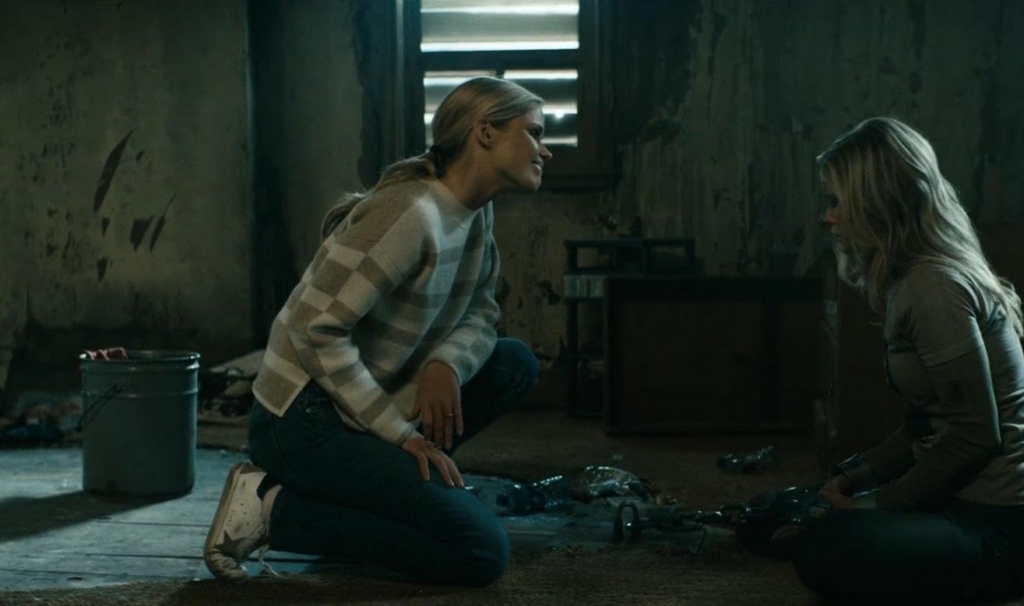
While that was devastating for the character, it was a little cathartic for those of us who felt like Annie was a little too good of a good guy.
What didn’t work
This is a small matter, but it is an issue that I want to address. After Annie finds out that Hughie slept with her doppelganger, she is furious at him.
In addition to this being unfair, it’s also a very cliche element to add. In almost every instance of a lookalike in fiction, there’s a moment where the love interest of the victim is fooled. Or almost fooled. And it’s always the same fight. It’s just played out and predictable. I’m just glad that it didn’t last very long.
Now that we’ve come to the end of the season, I can officially say that it was amazing. The story was deep and rich. The special effects were a stomach-turning good time. The character development was spot-on and satisfying. And, of course, it left me just about gagging to see what happens next. Unfortunately, it looks like we’ll have a bit of a wait. Because as of right now, the fifth season isn’t expected until 2026.

We’ve reached the second to last episode of The Boys, season four. And, as is appropriate for the penultimate episode of any show, things have to get a lot worse before they can get better.
Let’s discuss.
The story
Christmas is coming, and the whole world is getting ready. Ryan, despite being very clear that he didn’t want to appear on any TV shows or movies, has been strong-armed into participating in a Vought puppet Christmas special. He draws the line, though, when asked to sing about turning one’s parents in if they start talking about woke things.
Meanwhile, The Boys are trying to keep each other together. Butcher decides to take Sameer to the rest of the team. He also gets Frenchie out of prison, hoping they can make the Sup virus necessary to finally take down Homelander. Instead, this decision means disaster for one member of the team.
What worked
I first want to talk about Ryan’s speech near the end of the episode. Because it was exactly the moral of this whole story.
Ryan’s dad is a monster. His stepdad is also kind of a monster. But Ryan is a good kid. He cares about people, about family. And while he loves Homelander and Butcher, he doesn’t want to be like them.
Even better, this speech sounded like something a kid would say. Ryan didn’t open his mouth and start sounding like a college student all of a sudden. He sounds like a kid who misses his mom and wants to live up to the good standards she set for him. And I think that’s terrific.
Speaking of Homelander, he shot himself in the foot in this episode. I said earlier in the season that his hubris was going to be his downfall, and I was right. Without Sage, he just has the same weaknesses he’s always had. He’s going to fail because he just isn’t clever enough or patient enough to succeed.
Without Sage, I think a win is in the bag for The Boys. This isn’t to say that Homelander by himself isn’t dangerous. It’s just that he’s more like a wildfire than a controlled burn. He’s going to cause a lot of damage, but not get anything he wants out of it.
More’s the pity for him and everyone else who has to share his world.
Finally, I am thrilled with A-Train’s redemption story. I love that he wants to be a good person not to save himself, but to be a good person. His honest, pure and warm reaction to that little kid smiling at him in the last episode was heartwarming. It changed him in a moment, bringing to light a goodness that he’s been keeping under wraps for a long time.
This, along with Ryan’s courageous speech, proves once again what The Boys does so well. Yes, it’s gruesome. Yes, there’s blood and balls and batshit events. Yes, someone occasionally gets ripped in half. But there is a true human goodness in the story. One that we catch glimpses of. There are good people among the monsters. There is hope for redemption.
What didn’t work
Of course, so few things in this life are perfect, and this episode was no exception. For instance, I was irritated by the insinuation that Butcher cheated on his wife.
That just doesn’t make any sense. We’ve seen flashbacks of Billy and Becca. They were happy. He was happy. He was head over heels for her. And I don’t think it’s realistic or necessary for the character to throw in that he cheated. It does nothing to add to the story, it’s just a weird and offputting moment.
Doesn’t Butcher have enough to hate about himself? Can’t we just give him that at least he was a good husband?
Finally, I kind of hate that we ended up with Annie being caught. It’s just cliche, which is something I don’t normally say about this show. It feels lazy unless they do something very clever with it in the last episode. Which, I suppose, they might.
Next up is the season finale. And with this season being as insane as it has been, I’m expecting nothing short of bloody fireworks. And I mean literal fireworks of blood. At this point, would it surprise anyone?
 (4 / 5)
(4 / 5)
Episode six of The Boys was one of the most surprising episodes of the series so far. And that is certainly saying something. Because this season has so far been bonkers.
The story
Our episode today revolves around a party at Tek Knight’s lovely mansion. Yes, it does look just like Wayne Manor.
The Boys know that Tek Knight is working with Homelander on something, but they don’t know the details. So they decide to send Hughie in to bug the mansion.
Because that’s worked so well the other two times he’s tried to hide a bug!
It should surprise no one that this time goes no better. Hughie finds himself in Tek Knight’s basement. And by that I mean his BDSM dungeon.
Meanwhile, the party upstairs is no less disturbing. Homelander and Sage are trying to convince some well-off political donors to support a cue after the election. When pressed for details on his plan, Homelander freezes. He looks to Sage for help, but she wasn’t recently shot in the head and still in the junk food stage of her healing.
Fortunately, or unfortunately depending on your point of view, Neuman jumps in and saves the day.
What works
If I’m going to say one thing about this episode, it didn’t hold back at all. I didn’t expect them to show a character masturbating, sitting their bare behind on a cake, or spraying breastmilk into someone’s face. But every time I thought they’d cut the scene and let something be left to our imagination, they did not do that.
This is a dangerous move. Whenever you show the monster, you run the risk of them not being scary enough, or gross enough. As Stephen King says in Danse Macabre, to leave this sort of thing to the imagination if the reader makes things so much worse. So when they finally experience the monster, they might say that this isn’t so bad. It could have been so much worse.
But in this case, they managed to avoid that by making the scenes, especially the ones in Tek Knight’s dungeon, so much worse than I imagined it would be.
What doesn’t work
While this was a deeply disturbing episode in many ways, there was one really innocent and sweet moment.
And yes, I did have a problem with it.
Confronted by Firecracker, Annie decides to apologize for spreading rumors about her when they were kids. She tells her that she is genuinely sorry.
And I believe her. I don’t think Firecracker did, but I did.
So why is this an issue? Because I’m starting to think that Annie is maybe too nice. She is too good.
I know that Annie is our good guy. But every one of the other good guys has flaws. Hughie let his pride get in the way and took Temp V. MM hid himself from his daughter instead of teaching her to work through her emotions. Kimiko is far too closed off and has a hard time trusting others. Frenchie numbs himself with drugs. And well, what hasn’t Butcher done?
It is unrealistic that Annie is just so kind and so flawless. We all have shadows in our personalities. We all have weaknesses, we all mess up. We all do things we wish we could take back. The fact that Annie doesn’t seem to have anything like that is not just unrealistic. It’s infantilizing.
Give her some deep dark secrets. Give her something real to regret.
This was a shocking episode, even for someone fairly jaded like me. I wasn’t expecting the sort of weird sexual depravity, though I guess maybe I should have seen it coming. It was dark, upsetting, tense, and funny as hell. And with just two episodes left in the season, I can imagine the stakes are only going to get higher.
 (4 / 5)
(4 / 5)
By the way, if you like my writing you can get my short story, Man In The Woods, on Smashwords and Amazon.

